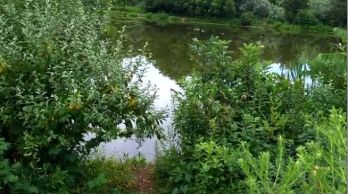Frog Facts – An Indicator Species
What first comes to mind when you think of a frog? Perhaps it’s the green, bulgy-eyed amphibian with the croaking sound, or maybe it’s the lovable Muppet character, Kermit the Frog, who brought the amphibian to life. What might not come to mind is the frog’s ecological integrity with species that span the globe.
Did you know there are more than 6,000 species of frogs around the world? Green is not the only color – some are quite colorful with spots and stripes. Some can even change color in order to protect and camouflage themselves.
As an amphibian, frogs are vertebrates with smooth and slimy skin. A frog can breathe much like a human by taking air in through their nostrils and down into their lungs. Also, when the frog is out of the water, mucus glands in the skin keep the frog moist which helps absorb dissolved oxygen from the air.
However, this skin absorption makes frogs especially vulnerable to water pollutants. Frogs are therefore considered "indicator species" because they are the first to be affected by degradation of the environment by pesticides and acid rain, for example.

This extreme sensitivity to changes in the environment can give scientists valuable insight into how an ecosystem is functioning. And because amphibians are both predators and prey, many other animals are affected by their existence.
With danger looming to the species population, World Frog Day, March 20, was created in 2009 with the intention to create awareness and save many different species of frogs from going extinct. Research indicates approximately 170 species of frogs have vanished just in the past decade due to human activity and fungal infections.
A few more facts about our amphibian friends: Because frogs are cold-blooded and lack insulation to keep their body warm, their body temperatures rise and fall with respect to the ambient temperature. To survive the winter, they hibernate. They may settle into the mud at the bottom of lakes, ponds, and streams. Some may even winter under leaves or in cracks or holes in the ground.
Once out of hibernation, their voices can be heard most frequently in Spring and Summer to define territory, warn of predators, and call mates.
We are lucky enough to live near a creek teaming with wildlife, including the Bullfrog. Although we could not catch a glimpse of the frog itself, we captured the sound. Take a moment to watch and listen. We hope your own awareness has been raised for World Frog Day.
Please take a moment to Subscribe to our YouTube Channel
Recommended Reading:
Spring Peepers Are An Unmistakable Sign of Spring